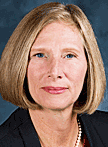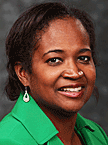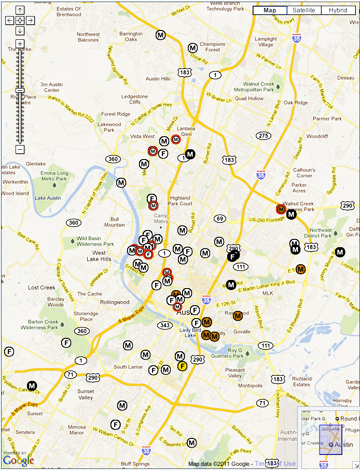Elections
Bledsoe may enter District 7 council race
Video: Laine challenges incumbent Kelly for District 6
Democrats sweep TCAD board election
Council Sets Charter Election Date
Election Date for Charter Amendments
Resolution Ensures Citizens Initiative
Won’t Force May 2012 Charter Election
by Ken Martin
© The Austin Bulldog 2011
 “It’s a kumbaya moment to celebrate,” Council Member Laura Morrison told The Austin Bulldog shortly before a press conference this morning at City Hall. “Usually we just talk about things we disagree on.”
“It’s a kumbaya moment to celebrate,” Council Member Laura Morrison told The Austin Bulldog shortly before a press conference this morning at City Hall. “Usually we just talk about things we disagree on.”
Morrison, Mayor Pro Tem Sheryl Cole, and Council Member Mike Martinez sponsored a council resolution on today’s agenda to confirm that the council intends to hold an election to amend the Austin City Charter in November 2012.
That assurance was sought by Austinites for Geographic Representation, which since late February has been building a broad citizens coalition to initiate a petition drive for a charter change that would establish a nonpartisan Independent Citizen Redistricting Commission that would draw 10 council districts that the Austin City Council would have no choice but to adopt. The group’s plan calls for only the mayor to continue being elected at-large. The petition drive launched with a rally October 22 that drew about a hundred people.
Striking an agreement on the charter election date was essential. If the petition drive were to trigger a May 2012 charter election, the City Council would have been forced to either put its own charter amendments on the May ballot, or be frozen out for two years if the citizens initiative got voter approval. Article XI, Section 5 of the Texas Constitution states that “no city charter shall be altered, amended or repealed oftener than every two years.”The press conference was attended by Morrison and Cole, as well as NAACP Austin President Nelson Linder and Austinites for Geographic Representation members Roger Borgelt, Charlie Jackson, and Daniel Llanes.
 In separately answering The Austin Bulldog’s question, both Morrison and Cole said that sponsoring the resolution for a November 2012 charter election was designed to reassure the citizens group and should not be viewed as an endorsement of the plan being pushed by Austinites for Geographic Representation. “I’m waiting to see what the Charter Revision Committee recommends,” Cole said.
In separately answering The Austin Bulldog’s question, both Morrison and Cole said that sponsoring the resolution for a November 2012 charter election was designed to reassure the citizens group and should not be viewed as an endorsement of the plan being pushed by Austinites for Geographic Representation. “I’m waiting to see what the Charter Revision Committee recommends,” Cole said.
NAACP Austin President Linder, a member of the 2012 Charter Revision Committee that is studying what form of geographic representation to recommend to the City Council, told The Austin Bulldog he favors the citizens initiative. “I think it’s the best plan out there,” he said.
The need for geographic representationwas laid bare by maps constructed by The Austin Bulldog and published August 4 that pinpoint the residential location of every mayor and council member elected over the last four decades.The unalterable fact that emerges is that large parts of Austin are not represented—or are grossly underrepresented—because of the at-large system of elections established by the Austin City Charter.
Seven charter recommendations, so far
At-Large Elections Favor Anglo Choices
Forty Years of Election History
Expose Extent of Disparities
by Ken Martin
© The Austin Bulldog 2011
It should come as no surprise that the greatest political power is exercised by those whose wealth, influence, and avid participation enable them to move the levers of democracy in their favor.
 The extent to which this is true in Austin is laid bare by maps constructed by The Austin Bulldog that pinpoint the residential location of every mayor and council member elected over the last four decades.
The extent to which this is true in Austin is laid bare by maps constructed by The Austin Bulldog that pinpoint the residential location of every mayor and council member elected over the last four decades.
The unalterable fact that emerges is that large parts of Austin are not represented—or are grossly underrepresented—because of the at-large system of elections established by the Austin City Charter.
This is not a new revelation. Attempts to gain voter approval for some form of council districts that would provide for equitable geographic representation have been put on the ballot six times, beginning in 1973, and six times failed to win majority support.
The ship of democracy continues to sail in the direction ordered by the majority. Which is how democracy is supposed to work.
But at what cost to those who feel disenfranchised by Austin’s at-large election system? The at-large system effectively means that all citizens—all 800,000 of us—are represented by every member of the city council. This system fails to make any one council member responsible for our concerns, or those of our neighbors. When every council member is responsible to every citizen, by definition, no one council member is responsible to a particular citizen.
The Austin City Council and a growing coalition of citizens are separately working on two different plans to give voters another opportunity in 2012 to approve a City Charter change to require the majority of city council members to be elected from geographic districts.
Based on what’s been discussed so far, these two initiatives differ significantly regarding how many council districts would be proposed, what procedure would be used for drawing district lines, the length of council terms, and whether terms would be staggered.
Both initiatives are still in the formative stages.
The City Council is scheduled to approve a resolution today (Item 28 on the agenda) to establish a 2012 Charter Revision Committee composed of 15 members who shall be appointed no later than August 25. The committee’s recommendations for charter amendments, and a map that includes any combination of at-large and geographic representation, are due by January 31.
The city’s plan or the grass-roots plan, or both, could wind up on the ballot next year.
But it should be noted that this appears to be the first time that a broad coalition of community organizations have launched a serious effort to formulate a plan that is independent of whatever proposal the city council puts forward, according to those involved in previous election campaigns for council districts.
None of the six failed propositions got on the ballot through a grass-roots petition drive. In the past, voters have only been able to react to whatever plan the city proposed—and the reaction has always been unfavorable.
Why geographic representation?
Brian Rodgers for Council?
Posted Wednesday January 12, 2011 2:39pm
Mulling Run for Austin City Council
Would File Against Incumbent
County Member Randi Shade
by Ken Martin
© The Austin Bulldog 2010
 Brian Rodgers has long been critical of the way the City of Austin manages taxpayers’ money. He has agitated for changes on a wide range of issues, including equity in property taxes, limiting campaign contributions, and repealing tax subsidies for high-end retail development.
Brian Rodgers has long been critical of the way the City of Austin manages taxpayers’ money. He has agitated for changes on a wide range of issues, including equity in property taxes, limiting campaign contributions, and repealing tax subsidies for high-end retail development.
Now he’s deciding whether he should run for a seat on the Austin City Council, where he would have a far greater ability to influence city policies and spending.
He’s especially eager to find ways to quit subsidizing growth that he contends does not pay for itself. That’s a theme that’s been running for years on the website of an organization he co-founded in December 2008, ChangeAustin. There’s even a Voter Pledge form on the website, that says, “I plan to vote for candidates in the May 2011 Austin City Council election who will fight to make Austin’s growth pay for itself and to halt the long-standing practice of special interests (large-scale developers and land speculators in particular) off-loading their costs onto current residents. Enough already.”
If he runs, Rodgers says he will oppose Council Member Randi Shade, who is seeking her second term. She hosted her campaign kickoff at Mercury Hall last night and drew an energized crowd. Her campaign website lists more than 150 supporters. Campaign finance reports are not due until January 15. Shade carried over $2,105 from previous reports.
In telephone interviews Rodgers said he’s undecided whether to seek election—mainly because he’s not sure he can run his real estate business and serve on the council at the same time.
The filing period for this election opens February 12 and closes March 14. The election is May 14.
“I’m still mulling it,” he says.
“The cost of living is killing us,” he says. “I think Randi Shade is tone-deaf to what regular citizens are facing.”
Hays County Judge, Commissioner Candidates
Six Candidates Vying to Win Jobs as
Hays County Judge and Commissioners
Research Provides Voters With a
Better Sense of People on the Ballot
Investigative Research by George “Trey” Hatt
© The Austin Bulldog 2010
Editor's Introduction: The Austin Bulldog is stepping off the beaten path of how to cover an election. We will point you to some of the stories written by other publications, but we will provide information that journalists seldom take the time to dig up and assemble.
Rather than selectively quote from our background research, our approach is to use an extensive, organized plan to find, copy, and publish source documents that you can explore to form your own conclusions about people seeking elective office.
Caveat: We found that the officeholders and candidates in Hays County are not required to submit an important document that their counterparts in Travis County must complete and file: Personal Financial Statements, per Chapter 159 of the Local Government Code.
That didn’t seem right, as these statements provide a tremendous amount of information, including sources of occupational income; investments of every kind; debts; business interests; trusts; board and executive positions; and a whole lot more. This is the kind of information that the public needs to be able to monitor the conduct of their elected officials for possible conflicts of interest.

